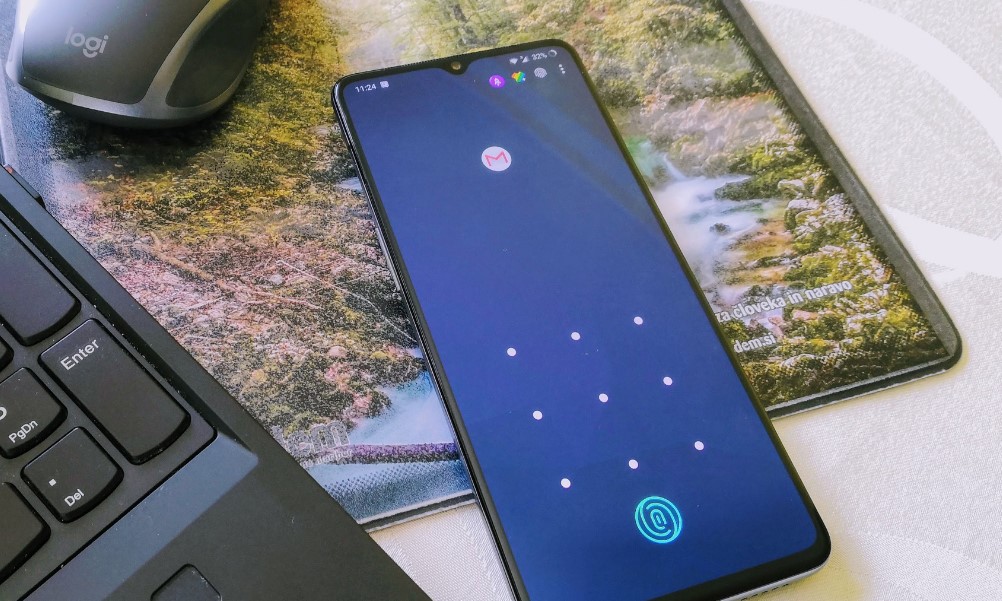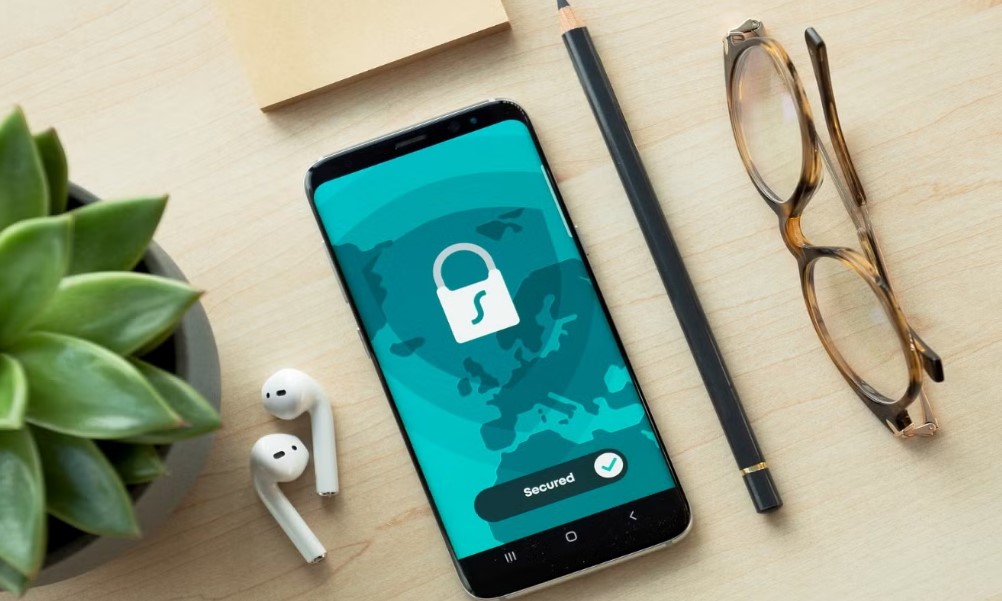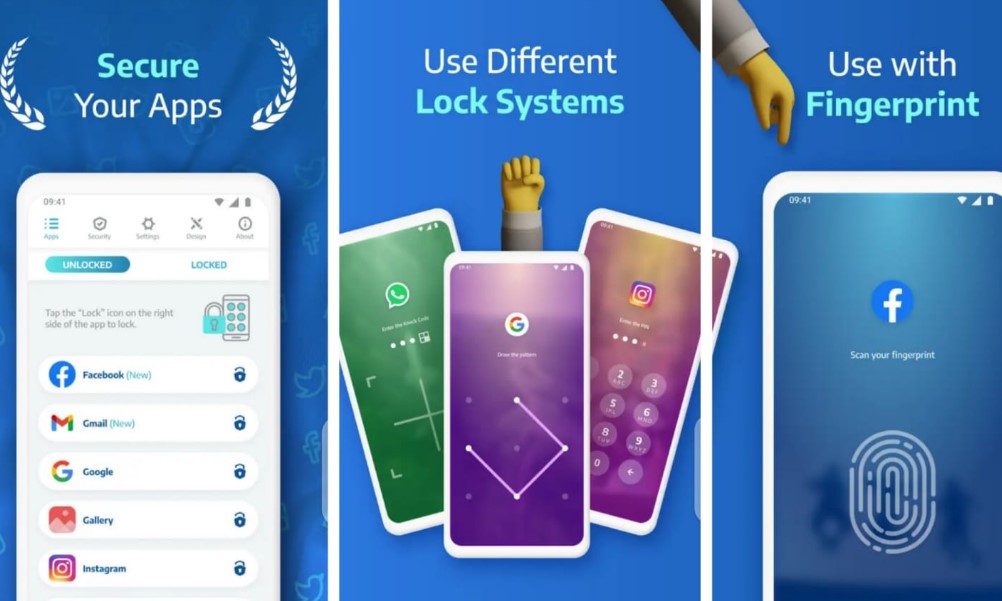Best Lock Apps on Android for 2024 | Solutions, Benefits, and Usage Tips
In today’s digital age, data privacy is more crucial than ever. Whether it’s personal photos, work-related files, or financial details, many Android users want to ensure their data is safe from unauthorized access. Locking specific apps on Android offers a flexible solution by providing additional security for specific applications rather than the entire device. This article will guide you through the best lock apps for Android, explaining how they work, the benefits they offer, and how to choose the right one based on your needs.
Why You Should Lock Apps on Your Android Device

Locking apps on your Android device is a practical and essential measure to enhance data privacy and security. Given the vast amounts of personal and professional information stored on mobile devices, the risk of unauthorized access or data breaches can have serious consequences. Whether you’re protecting sensitive work files, financial information, or private photos, using an app lock provides an additional layer of security and control over your data.
Enhanced Privacy and Data Protection
One of the main reasons to lock apps is the assurance of privacy. Your Android device likely contains various apps that access sensitive information, such as banking, messaging, and email applications. Locking these apps prevents unauthorized individuals from viewing private messages, browsing financial records, or accessing professional data. It’s especially important in cases where a phone may be shared among family members or friends, as an app lock can restrict access to personal content.
Preventing Data Leaks and Unauthorized Access
Data breaches can occur if unauthorized individuals access specific apps. For instance, someone could unintentionally or intentionally gain access to your social media or email accounts, leading to potential security risks or reputational damage. Locking apps with a PIN, pattern, or fingerprint authentication provides a strong barrier against unauthorized access, making it significantly harder for someone to misuse or leak your data. This level of security is especially crucial in scenarios where devices are lost or stolen.
Added Control and Flexibility
An app lock allows you to selectively secure certain apps rather than locking the entire device. This approach gives users more flexibility, as you can leave low-sensitivity apps like weather or music apps accessible, while safeguarding more sensitive apps. This added layer of protection ensures that even if you hand your phone to someone, your private data remains secure. App-locking solutions are also beneficial for parents, as they enable restriction of app access on shared devices, helping to prevent children from opening certain applications or making unauthorized purchases.
Protection Against Accidental Actions
In addition to preventing intentional access, app locks help avoid unintentional actions, such as accidentally deleting important files or making unintended in-app purchases. Locking apps adds peace of mind, especially if you frequently share your device or use it in public settings. By locking specific apps, you gain confidence that no unintended actions will occur if someone else briefly uses your phone.
Benefits of Using App-Locking Solutions on Android

App-locking technology helps in many ways:
- Enhanced Privacy: App locks prevent other users from opening specific apps, ensuring your private data remains protected.
- Reduced Risk of Data Breaches: In scenarios where phones are lost or stolen, app locks make it significantly more difficult for unauthorized users to access sensitive information.
- Convenience and Customization: App locks allow users to choose which apps to secure, providing flexibility and control.
Best Lock Apps on Android for 2024

Below are some of the top app-locking solutions currently available for Android. Each product is known for its reliability, ease of use, and security features. Let’s explore each one in depth.
App 1: Norton App Lock
<a href=”https://norton.com”>Norton App Lock</a>
Norton App Lock is developed by Norton, a recognized name in cybersecurity. It is widely used for securing Android applications by providing a straightforward and reliable approach to app locking. Users trust this app for protecting sensitive data across various applications.
Key Features
- PIN and Fingerprint Access: Offers the option of both PIN and fingerprint security.
- Customizable Settings: Users can select individual apps they wish to lock, enhancing privacy without the hassle of locking the entire device.
- Intruder Detection: Captures photos of anyone attempting unauthorized access, adding an extra security layer.
Pros and Cons
Pros:
- Trusted security brand
- User-friendly interface and easy setup
- Flexible access options
Cons:
- Limited customization beyond basic locking
- Advanced features may require a premium purchase
Pricing
Norton App Lock is free, with in-app purchase options available for additional security features.
Use Case
Norton App Lock is ideal for users seeking a simple, reliable app-locking solution without complex configurations. It’s particularly beneficial for securing high-sensitivity apps like email and financial services, where protecting confidential data is essential.
App 2: AppLock by DoMobile Lab
<a href=”https://domobile.com”>AppLock by DoMobile Lab</a>
AppLock by DoMobile Lab is highly customizable, offering features tailored to different user needs. With this app, users have a variety of locking options and enhanced security features, making it a popular choice among Android users.
Key Features
- Pattern, PIN, and Fingerprint Support: Provides multiple locking methods to accommodate user preferences.
- Intruder Selfie: Captures a photo of any individual who tries to access locked apps with incorrect credentials.
- Customizable Profiles: Enables different locking settings for different apps, allowing users to control which apps are locked at which times.
Pros and Cons
Pros:
- Extensive customization options for user preferences
- Offers an additional security feature with intruder selfies
- Basic version is free
Cons:
- Contains ads in the free version
- Premium features require a subscription
Pricing
AppLock by DoMobile Lab offers a free basic version supported by ads, with premium subscriptions available for an ad-free experience and additional features.
Use Case
AppLock by DoMobile Lab is excellent for users who value customizability. Its extensive features are ideal for those seeking a more versatile app lock, especially users who need different levels of security across various applications.
App 3: Smart AppLock
<a href=”https://smartapplock.com”>Smart AppLock</a>
Smart AppLock offers a range of advanced features aimed at both personal and professional use. Its robust options for PIN, pattern, and fingerprint security make it a popular choice among Android users looking for flexibility.
Key Features
- PIN, Pattern, and Fingerprint Lock: Provides multiple secure access options to meet different user preferences.
- Auto-Lock Settings: Automatically locks specific apps after a designated period of inactivity, adding convenience.
- App Cover: Disguises locked apps as other types of files or icons, adding another layer of privacy.
Pros and Cons
Pros:
- Provides extensive customization and flexible locking schedules
- Offers an auto-lock feature for seamless security
- Available for free with optional paid features
Cons:
- Ads in the free version can be intrusive for some users
- Some users report occasional app stability issues
Pricing
Smart AppLock is free with an ad-supported version, with a premium upgrade for users seeking additional features.
Use Case
This app is particularly beneficial for users seeking customizable options in terms of appearance and locking behavior. With Smart AppLock, users can feel secure knowing their apps will automatically lock when idle, protecting their data in case of unintended access.
App 4: Keepsafe App Lock
<a href=”https://keepsafe.com”>Keepsafe App Lock</a>
Keepsafe App Lock provides a streamlined experience for users looking for simplicity and effectiveness. Known for its vault feature, Keepsafe ensures high privacy for photos and other sensitive information.
Key Features
- Pin, Pattern, and Fingerprint Lock: Offers three popular locking methods.
- Photo Vault: Protects personal photos and videos within a secure vault.
- Customizable Lock Settings: Allows users to choose specific apps to lock, keeping everything else accessible.
Pros and Cons
Pros:
- Easy-to-use interface for beginners
- Offers a dedicated photo vault feature
- Reliable brand in data privacy
Cons:
- Some customization features are limited in the free version
- Premium version required for ad-free experience
Pricing
Free version available; premium plans are available for additional features.
How Lock Apps on Android Work
Locking apps on an Android device involves adding an extra layer of security to individual applications, ensuring that even if someone gains access to your unlocked phone, they cannot open specific apps without additional authentication. This process is facilitated by app-locking applications that utilize various security mechanisms provided by the Android operating system. Here’s an in-depth look at how these app locks function.
Core Functionality of App Locks
App-locking applications work by monitoring the launch of other apps and intervening when a protected app is opened. They employ the following steps:
- Monitoring App Activity: App locks run in the background, continuously monitoring which apps are being accessed. They use special permissions, like the Accessibility Service, to detect when a protected app is about to launch.
- Intervening at Launch: When the user attempts to open a locked app, the app lock detects this event and immediately overlays a lock screen over the app. This prevents the user from interacting with the app until the correct authentication is provided.
- Authentication Process: The lock screen prompts the user to enter a predetermined PIN, pattern, password, or biometric verification (like fingerprint or facial recognition). This information is securely stored when the app lock is set up and is only known to the user.
- Granting or Denying Access: If the correct authentication is provided, the app lock removes the overlay, allowing the user to interact with the app as usual. If incorrect, the app remains inaccessible, and some app locks may trigger additional security measures, such as logging the attempt or taking a photo of the intruder.
Types of Authentication Methods
- PIN Codes: A simple numerical code that the user sets up, which must be entered correctly to unlock the app.
- Pattern Locks: A specific pattern drawn on a grid of dots. The user must replicate the exact pattern to gain access.
- Passwords: A combination of letters, numbers, and symbols, offering a higher level of security due to increased complexity.
- Biometric Locks: Utilizes the device’s fingerprint scanner or facial recognition technology for authentication, offering both security and convenience.
Underlying Technologies and Permissions
App locks require certain permissions to function effectively:
- Accessibility Service Permission: Allows the app to monitor other apps and detect when a protected app is launched.
- Overlay Permission: Enables the app to display the lock screen over other applications, ensuring the lock screen appears immediately when a locked app is opened.
- Usage Access Permission: Provides the app with information about other app usage, helping it to identify when to activate the lock screen.
These permissions are crucial for the app lock to integrate seamlessly with the device’s operations without compromising overall functionality.
Additional Security Features
- Intruder Selfie: Some app locks can use the device’s front camera to take a photo of anyone who enters incorrect authentication details multiple times. This feature helps identify unauthorized access attempts.
- Customizable Lock Settings: Users can select which apps to lock and even set different authentication methods for different apps.
- Delay Locking: Allows a grace period where the user can switch between locked apps without re-entering authentication, enhancing usability.
- Stealth Mode: Hides the app lock icon from the app drawer, making it less obvious that certain apps are protected.
How App Locks Enhance Security
- Protection Against Unauthorized Access: By requiring authentication for specific apps, app locks prevent unauthorized users from accessing sensitive information, even if they have physical access to the device.
- Data Encryption: While app locks primarily focus on access control, some advanced app locks also offer encryption for stored data within apps, adding an extra layer of security.
- Prevention of Uninstall: Many app locks have settings that prevent them from being uninstalled without proper authentication, ensuring that the security measures cannot be easily bypassed.
Considerations for Effective Use
- Resource Management: Running in the background, app locks may consume additional battery and processing power. Opting for well-optimized apps can mitigate this issue.
- Compatibility: It’s important to choose app locks compatible with your device’s Android version to ensure smooth operation.
- Privacy Policies: Users should review the privacy policies of app locks to ensure that personal data is handled securely and not shared without consent.
Limitations and Security Best Practices
- Bypass Risks: Some app locks can potentially be bypassed through safe mode or by clearing app data. Selecting a reputable app lock that addresses these vulnerabilities is crucial.
- Regular Updates: Keeping the app lock and the device’s operating system updated helps protect against newly discovered security flaws.
- Comprehensive Security Approach: While app locks enhance security, they should be part of a broader security strategy that includes device encryption, secure passwords, and cautious app installations.
Real-World Scenarios for Using App Locks
Case 1: Securing Financial and Personal Apps
For those using their devices for banking or accessing sensitive information, app locks provide an added level of security. For instance, someone handling financial transactions on their device can benefit greatly from having an app lock in place, ensuring financial data is safe.
Case 2: Parental Control
Parents can use app locks to limit access to certain applications, ensuring that children do not open specific apps without permission. This adds a helpful safeguard against accidental purchases or access to inappropriate content.
Case 3: Privacy in Shared Devices
In households where a device may be shared among family members, app locks can restrict access to private content. This setup is perfect for users who need to share devices while ensuring personal data remains protected.
Frequently Asked Questions
Q1: Which lock app is the best for Android?
A1: The best lock app depends on user needs. Norton App Lock is ideal for simple protection, while AppLock by DoMobile Lab offers high customization options.
Q2: Can app locks affect phone performance?
A2: Generally, most app locks are designed to be resource-efficient. However, features like intruder selfies may consume additional battery.
Q3: Is it safe to download app locks from third-party stores?
A3: It’s safest to download apps from the Google Play Store or official brand websites to ensure they are secure and reliable.